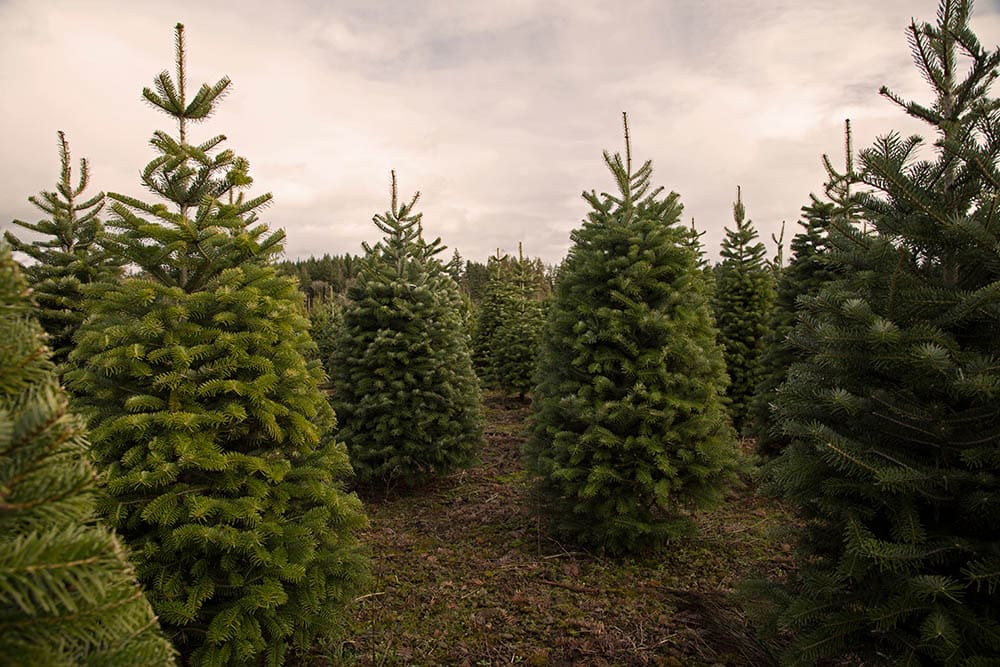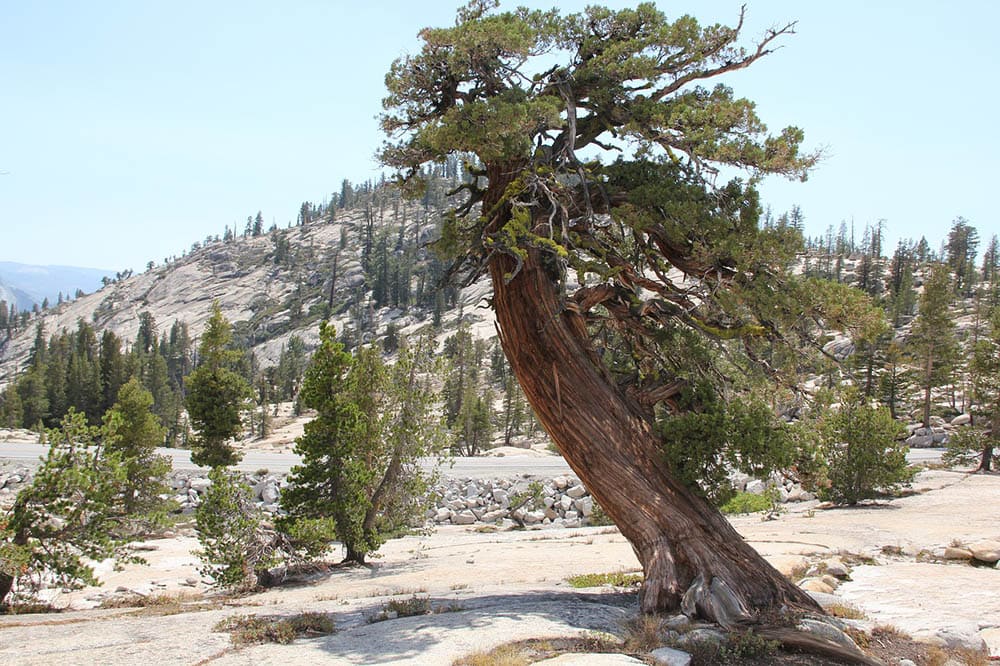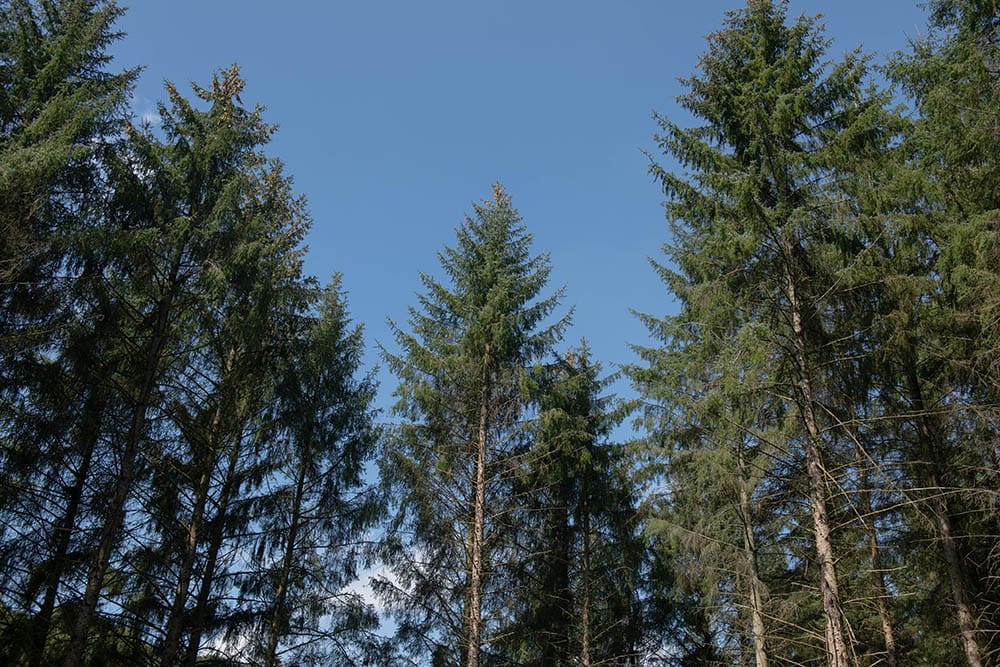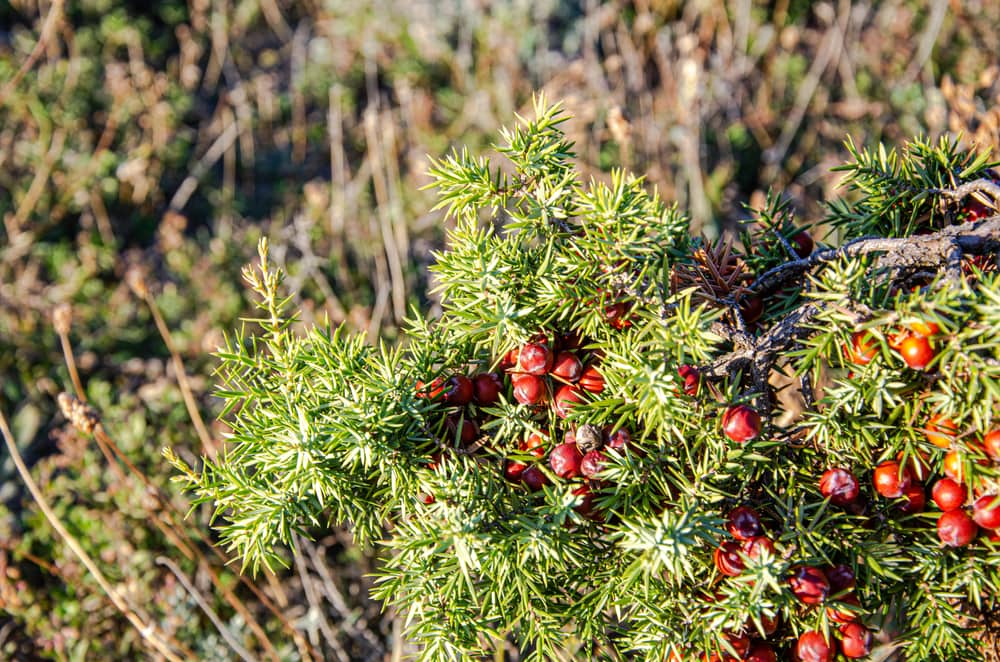9 Types of Trees in Washington (With Pictures)
-

- Last updated:

Washington state has a variety of different climates that foster a unique group of native trees. In the west, there are soggy coastal lowlands that run up to the mountains that run through the state from north to south. On the eastern slopes of the mountains are scrubby grasslands, open prairies, and agricultural fields. There are areas that get multiple feet of rain per year and areas where it hardly rains at all. There are cold lonely mountain peaks that are constantly snowy and areas that are always mild and rarely ever see snow.
This diverse environment has produced trees that can grow 300 feet tall and live over a thousand years and arid trees that look more like shrubs than they do their cousins. Here are 9 different types of trees you can find in Washington.

The 9 Types of Trees in Washington
1. Ponderosa Pine

| Scientific Name: | Pinus ponderosa |
| Typical Height: | 150-200 feet |
| Longevity: | 300+ years |
Ponderosa pines are large pine trees that are common in the Pacific Northwest. These pines can grow as tall as 200 feet and live as long as 500 years when they live in ideal conditions. Young ponderosa pines have dark, almost black bark, which lightens into a brownish color as they age. You can pick out a Ponderosa pine by its needles which come in clusters of three. The needles are very long and can grow as big as twelve inches in length, which makes ponderosa pines valued as decorative trees.
Ponderosa pine also has many commercial uses, and it is a common wood found in construction. Ponderosa pines like to grow in eastern Washington and thrive in dry soil far from the soggy uplands near the coast.
2. Douglas Fir

| Scientific Name: | Pseudotsuga menziesii |
| Typical Height: | 200 feet |
| Longevity: | 400+ years |
Douglas fir is prized as a Christmas tree. Many people are familiar with this tree in its extremely adolescent form when they are chopped and sold as the popular Yule decoration. In the wild, Douglas firs can grow to enormous heights and live to be incredibly old.
The tallest Douglas firs can approach 300 feet in height, and some of the oldest examples of this tree have been estimated to be close to 1000 years old. The thickest trunks have had diameters of 10 feet or wider, making the oldest Douglas firs truly massive. These trees thrive in the wet climates along Washington’s coast and cluster in deep old growth forests. Douglas firs are extremely common in western parts of the state and can be grown as a lawn ornament.
3. Western Red Cedar

| Scientific Name: | Thuja plicata |
| Typical Height: | 200 feet |
| Longevity: | 1000+ years |
Western red cedars are remarkable trees. They are some of the oldest trees found anywhere in North America. The oldest specimen of these trees has been estimated to be 1,500 years old or older. The oldest trees are found in large wet forests in the lowlands near Washington’s coast.
Western red cedar is also one of the most popular species of wood for use in all types of construction. It has an incredible scent that is instantly recognizable. It is bug resistant, rot resistant, and can last for decades outside without any sort of paint or treatment. Western red cedar trees have tiny needles and very small cones. This versatile tree can even grow in the shade of other larger trees, where they will be stunted but still healthy.
4. Western Hemlock

| Scientific Name: | Tsuga heterophylla |
| Typical Height: | 150-200 |
| Longevity: | 350+ years |
The Western hemlock is the official state tree of Washington. They can be found in the wild as well as in the yards of native Washington residents. Western hemlock can grow to great sizes, including heights of over 200 feet and trunks thicker than 4 feet. The needles are flat and sport white lines on their underside, which betrays western hemlocks from other hemlocks.
You can also spot these trees by their tiny cones. The cones of the western hemlock are less than one inch in size. Despite the small seeds, these trees can easily live between 400 and 500 years in ideal conditions. They thrive in moist coastal lands and the low mountains near the coast of the state. Western hemlocks do not grow in stands but often happily coexist with multiple different tree species.
5. Sitka Spruce

| Scientific Name: | Picea sitchensis |
| Typical Height: | 200-300 feet |
| Longevity: | 500+ years |
Sitka spruce trees are massive evergreens named for a town in Alaska where they grow the thickest. These trees can grow as tall as 300 feet and have trunks that exceed 12 in diameter. Sitka spruce is extremely common in the wet coastal areas of the Pacific, stretching from Washington up through British Columbia and into Alaska.
Despite the impressive heights and ages of this tree, they are constantly under attack from budworms which stunt their growth and kill their highest points. The bark grows in small shield-like medallions, and the wood is a popular choice for making musical instruments such as pianos and guitars.
6. Red Alder

| Scientific Name: | Alnus rubra |
| Typical Height: | 80-100 feet |
| Longevity: | 100 years |
Red alder trees are prized for their growing speed. Some people do not have the time or the patience to wait decades for a large tree to sprout and mature. Red alders are one of the fastest growing trees in the United States, and they can grow 3 to 5 feet per year for the first twenty years. This allows you to see the growth of your tree in real time.
However, alders do not live as long as other trees native to the wet coastal areas of the state. These trees only live to be 100 years maximum. Alders do not have needles. Instead, they have small shiny green leaves with points and serrated edges similar to a holly leaf.
7. Pacific Yew

| Scientific Name: | Taxus brevifolia |
| Typical Height: | 30-50 feet |
| Longevity: | 100+ |
Pacific yew trees are extremely interesting. They are small, shrub-like, and sprout single seeds surrounded by a red construct that looks remarkably like a berry. These trees take an extremely long time to grow and often rot from the inside, creating hollow trunks. The propensity to rot has made it difficult for arborists to gauge accurate ages for these trees as the age rings rot away. Pacific yews are popular ornamental plants because they do not grow large or fast. They have a pleasant appearance and can be kept at very manageable sizes. Pacific yews are used to create professional archery bows as well as canoes. They are also used in medicine to fight serious illnesses such as cancer.
8. Mountain Hemlock

| Scientific Name: | Tsuga mertensiana |
| Typical Height: | 80-120 feet |
| Longevity: | 500+ years |
Mountain hemlocks, unsurprisingly, grow on the sides of tall mountains. These trees are most often found in remote snowy fields at high elevations in the subalpine zone of mountains stretching from Oregon, Idaho, and Washington then up through Alaska. These trees grow very slowly and can live for hundreds of years.
The oldest mountain hemlocks are estimated to be 800 years old or older. The tallest examples of this tree have attained heights reaching over 175 feet tall. These cold-weather trees are often seen growing alone near the tree line of mountain slopes and enjoy sharp cold winters and mild summers. If you ever go hiking in the Pacific Northwest, keep your eyes peeled for these hemlocks gripping the sides of the slopes above.
9. Western Juniper

| Scientific Name: | Juniperus occidentalis |
| Typical Height: | 20-50 feet |
| Longevity: | 100+ years |
Western junipers are trees found throughout the western United States and are primarily located in southeastern Washington. Compared to other trees common to Washington, western junipers are relatively small. They only grow to be 50 feet at maximum and rarely reach 60 feet. These trees are short, bushy, squat, and grow extremely slowly.
Western junipers reach maturity around 100 years old and produce small cone-like seeds. These trees grow in scrubby land that has a savannah appearance rather than in the wet old-growth forests that occupy much of the western part of the state. Western junipers are typically found on low slopes and in shallow valleys, often in the presence of mountain sage grass.

Conclusion
Some of these trees are best viewed in the wild, where you can see them in their full natural beauty and truly massive sizes. Other trees can be bought from a local nursery and planted in the yard as ornamental plants or shade trees. There are numerous different trees native to Washington, each with a distinct look, unique history, and charm. If you spend enough time in Washington and keep your eyes peeled, you will be able to spot each and every one of these species.
Featured Image Credit: srikanta, Unsplash
Contents
